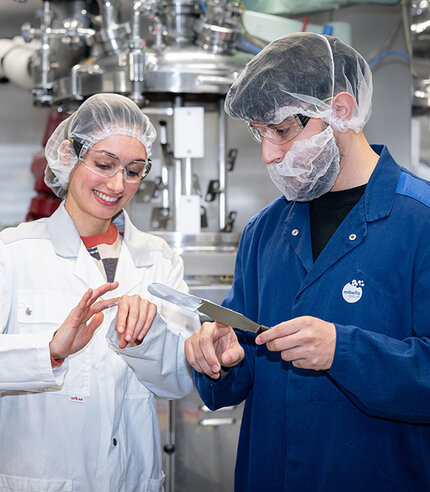In the first part we took a brief look back to an eventful, busy 2015 and considered (digital) health in the future. Let’s return to the exciting world of trends and the topics that will be our constant companions in 2016 and beyond. This instalment focuses on technology, with buzzwords such as driverless cars, the Internet of Things (IoT) and drones. And as these changes will impinge on our daily lives they concern us all. Us being the Mibelle Group, industry and society and you as a private individual.
Mass phenomenon: flying multicopter
Drones are unmanned flying objects and, until recently, were mainly known for their use by the military. Use in the civilian sphere is rapidly increasing and is likely to be diverse. Drones will supposedly act as “delivery boys” for the postal service, Amazon, Google, etc.; as monitors, sounding the alarm when sharks appear near the Australian coast, for example, and in Africa will supposedly transport medicines and other small commercial goods from an airport built specifically for drones to areas that are difficult to access and thus improve/overcome the country’s economic and health problems. The Airdog drone attracted a lot of attention at last year’s CES 2015. The drone flies itself and automatically follows the user. So far there have mainly been prototypes, but many manufacturers are slowly moving towards mass production. The fact that there is still room for improvement was experienced first-hand by Austrian skier Marcel Hirscher during a downhill race. During the Madonna di Campiglio night slalom (I) a drone crashed directly behind him on the course during his run (!). Because use of these multicopters – a term preferred by some because, in their opinion, the other name is too reminiscent of military equipment – inevitably entails questions about the legal position and data protection, the Swiss Bundesamt für Zivilluftfahrt – Bazl (Federal Office of Civil Aviation – FOCA) has published on its website the most important rules from its point of view.
Future transport – the networked car
In addition to countless projects relating to electric travel and sustainability, the car industry is becoming a talking point because of self-driving (driverless) and connected vehicles. This year car visionary Frank M. Rinderknecht’s Swiss think tank Rinspeed achieved a world première at this year’s CES with the “Σtos” hybrid sports car. In self-drive mode the steering wheel folds up at the touch of a button and fully retracts into the dashboard. Google is also working on a driverless car and is testing the prototype on California’s roads. And even Postautoschweiz AG has been conducting a pilot test on a private site of two electric, driverless shuttle buses since December. These smart shuttles might be able to transport people through the pedestrianised zones and shared spaces in Sitten as early as spring 2016.
The connected car may as yet be a pipe dream, but the aim is clear – transport users and transport systems which are networked and exchange information, resulting in fewer accidents and traffic jams. Jaguar Landrover is researching pothole warning technology. Other road users will be warned immediately and the council road maintenance department informed, saving the cost of repairs. Intelligent sat-navs and networked infotainment systems are also some of the themes associated with the connected car which are being developed. And totally visionary thinkers are talking about traffic lights as we know them being obsolete by 2030. Cars, pedestrians and cyclists will be networked, so that all traffic can be managed.
Visit the Geneva International Motor Show for more exciting innovations and new products for petrolheads. It is traditionally the first car show of the year and is one of the most important in the world.
Smart tech is the new high tech
Smart living – Internet of Things – Connectivity. 2016 is when it is supposed to really take off. Practically everything electrical will be networked in the future, from heating controls, via your bicycle lock, to the coffee machine. The Internet of Things is supposed to make the biggest impact on the household. This also underlines the motto for this year’s Swissbau (Swissbau is one of Europe’s biggest construction industry trade fairs and is a meeting point for the Swiss construction industry every two years). Bauknecht, an international manufacturer of household appliances, introduced a whole range of networked appliances, invested almost 400 million Swiss francs in new technologies last year alone and plans to have equipped European production plants to manufacture connected appliances at a cost of another 800 million Francs.
Europe is ready for the uses and advantages of networked household appliances and is receptive to buying them. Two-thirds are considering purchasing a networked household appliance, according to the results of a representative European study (Germany, Austria, Switzerland, Denmark and Belgium) conducted by Bauknecht. This is also supported by a study by Parks Associates (Parks Associates is an internationally recognised market research and consultancy firm, specialising in new technology products and consumer services). According to Parks’ study, 43% of households in western Europe want to purchase a connected household gadget this year – this means 50 million potential customers.
But what, specifically, do “smart home”, “smart living” or even “intelligent living” mean? On the one hand more and more domestic appliances are being linked to the Internet and smartphones, from your toothbrush, via the refrigerator and washing machine, to the vacuum cleaner. The appliances also network with each other and can be centrally controlled, such as the light, heating, or alarm System.
An intelligent fridge, for example, helps to store food at the optimum temperature; the connected coffee machine switches on as soon as you get up; the smart washing machine determines how long to run for when the electricity tariffs are cheapest. It will soon even reorder washing powder, as will supposedly soon be possible in the USA. Even now there is the hob which realises when water or milk is about to boil over and adjusts the temperature itself. All household digitalisation focuses on practicality and environmental friendliness. According to Karin Frick, research director at the Gottlieb Duttweiler Institut, connected appliances will play a decisive role in the switch to renewables. Connected appliances use much less energy, devices don’t have to be on standby all the time. Technology keeps pace and doesn’t forget like humans. Connected devices are much more efficient than we are where energy management is concerned. And instead of replacing devices, all that is needed is a software update, as in the case of the Tesla, for example.
2016 will show us which trends will come to the fore, which mega trends will influence us in the fields of society, consumption and industry and what macro and micro trends will impact us in the form of products, services and mindsets. Day in, day out, we at the Mibelle Group are involved with social trends and trend scouting.








